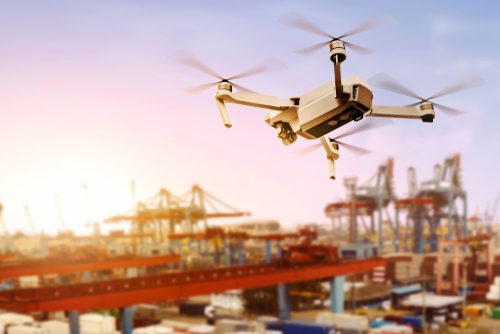Early results from on-going European U-Space demonstrator programmes suggest that when considering the application of UAS traffic management systems to urban air mobility (UAM) operations there are fundamental challenges – which until now have not been fully understood – that will need to be urgently addressed before UAM services can be safely introduced. This was one of the main conclusions of the Third Workshop of the European U-Space Demonstrator Network held at the Eurocontrol headquarters in Brussels on 9 July.
Challenge one is “to ensure safe integration of drones in the airspace” said Munish Khurana, Senior Manager, Business Development Directorate European Civil-Military Aviation Co-operation and Strategies at Eurocontrol. A key part of this is to ensure that non-aviation personnel – such as city planners, local authorities and first responders – understand the language, conventions and concepts of the aviation world with which they are starting to engage.
Eurocontrol is undertaking an airspace assessment in Riga, where it is learning about the complexity and enormity of such an assessment. One such learning is that the cities involve many different people who speak a different language. When U-Space managers talk to hospitals, city planners or the police about gathering data for operations in the air and on the ground they are surprised at what they find. There is a need to provide guidance and support to these important stakeholders understand the world of air traffic management and U-Space.
Challenge two is to access funding for U-Space and UTM developments in parallel to the funding streams being made available for electrically-powered air taxis. Representatives from the SESAR Horizon 2020 PODIUM (Proving Operations of Drones with Initial UTM ) project https://www.unmannedairspace.info/latest-news-and-information/we-need-a-utm-system-capable-of-coping-with-different-legislation-in-different-states-peter-alty-podium/ reported that it was still not possible for two UTM service providers to interoperably communicate with the same drone even in a relatively small geographical area. It will take considerably more investment and research to develop a U-Space system whereby multiple service providers can communicate together with multiple UAS across a complex, large urban environment.
Challenge three – there is no generic business case for UAM. While many air taxi operators and manufacturers have developed pricing structures and ticket prices for their services there is no clear understanding as to how much operators will have to pay for U-Space services and other infrastructure costs, according to some ATM speakers. Urgent work is required to develop a full and comprehensive business case for UAM, which includes these elements.
As UAM has been included in the recent EASA U-Space draft regulations (https://www.unmannedairspace.info/uncategorized/easa-u-space-proposals-require-competitors-to-exchange-tracking-data/) more work will be required to ensure that the early findings of UAM-related U-Space demonstrator programmes are included in any final regulations.
These challenges, although formidable, are resolvable, though they will require a considerable change in mind-set. For example, according to a presentation by Airbus, over the next few years U-Space/UTM will evolve until it eventually integrates ATM operations with its operational framework.




